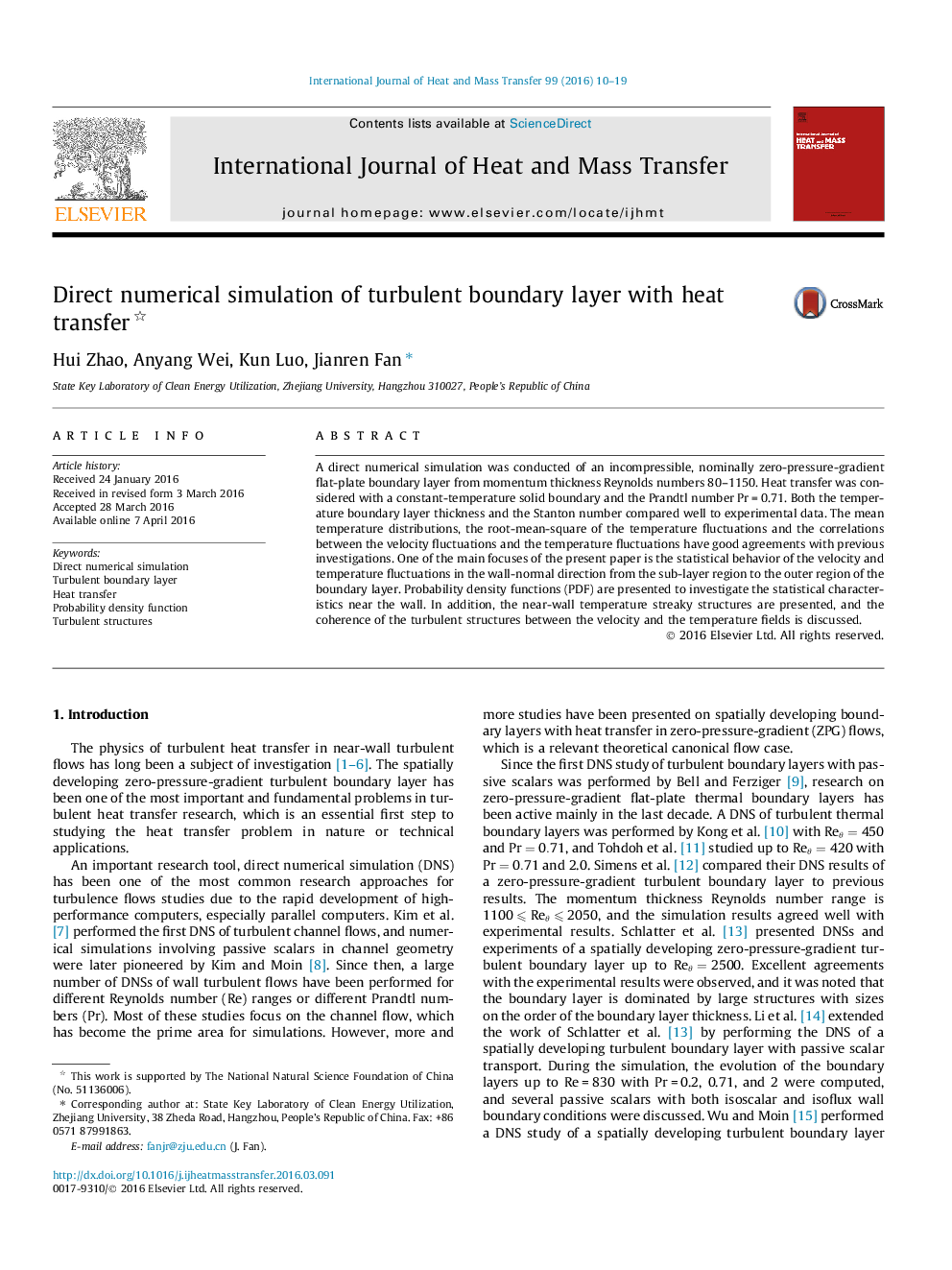| Article ID | Journal | Published Year | Pages | File Type |
|---|---|---|---|---|
| 656428 | International Journal of Heat and Mass Transfer | 2016 | 10 Pages |
•A spatially developing turbulent boundary layer with heat transfer was studied.•Turbulent statistical results compared well to experimental and numerical results.•Streamwise temperature fluctuations tend to be negative in the sub-layer region.•Large-scale superstructures are found in turbulent thermal boundary layer.•The temperature fields can be used as markers of turbulent structures.
A direct numerical simulation was conducted of an incompressible, nominally zero-pressure-gradient flat-plate boundary layer from momentum thickness Reynolds numbers 80–1150. Heat transfer was considered with a constant-temperature solid boundary and the Prandtl number Pr = 0.71. Both the temperature boundary layer thickness and the Stanton number compared well to experimental data. The mean temperature distributions, the root-mean-square of the temperature fluctuations and the correlations between the velocity fluctuations and the temperature fluctuations have good agreements with previous investigations. One of the main focuses of the present paper is the statistical behavior of the velocity and temperature fluctuations in the wall-normal direction from the sub-layer region to the outer region of the boundary layer. Probability density functions (PDF) are presented to investigate the statistical characteristics near the wall. In addition, the near-wall temperature streaky structures are presented, and the coherence of the turbulent structures between the velocity and the temperature fields is discussed.
